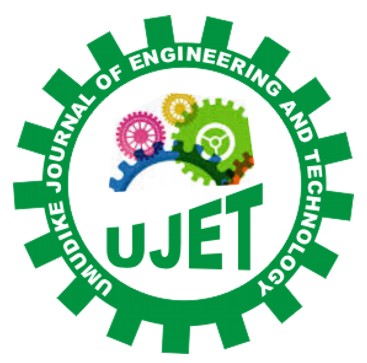|
Mohammed, A. A.
National Centre for Hydropower Research and Development. University of Ilorin, Ilorin. Nigeria
Sule, B. F.
Water Resources and Environmental Engineering. University of Ilorin, Ilorin, Nigeria
Salami, A. W.
Water Resources and Environmental Engineering. University of Ilorin, Ilorin, Nigeria
ABSTRACT
Data on water quality at Kainji hydropower reservoir in four sampling locations from January, 2010 to December, 2015 was subjected to monthly variation and descriptive statistical analyses. Analysis of variance (ANOVA) test was carried out to reveal significant difference between water quality parameters measured at upstream and downstream ends of the reservoir at 0.05 level of significance. Results revealed that there were more statistically significant differences in phosphate (PO43-) and oil/grease concentrations at the upstream locations, while total hardness, pH, turbidity and oil/grease concentration were more statistically significant at the downstream locations of the reservoir. The concentration of oil/grease is higher at the turbine discharge, implying a need to check and correct for likely mechanical defects at the turbine and generator compartments. The results obtained were compared with the Nigeria and World Health Organisation (WHO) water quality standards for drinking water and aquatic habitats, the comparison revealed that many of the water quality parameters fell within the limits permissible by the standard; however, Fe2+ and turbidity were found to be higher than the permissible standards at all the selected locations. Total suspended solid (TSS) was found to be high at boatyard, turbine discharge and tailrace; this is as a result of turbulence of due to hydropower reservoir operation. The concentration of nitrate (NO3-) was found to be above the permissible standards at the turbine discharge and tailrace sections; this is due to the activities like farming and rearing of cattle around the lake which result to in the lake eutrophication. Dissolved oxygen (DO) concentration was found to be within the established water quality standards and will favour the growth and well being of aquatic habitat.
Keywords: ANOVA test, Hydropower, Kainji, Physico-Chemical, Water Quality
|
View: 354 | Download: 1
Published
Wednesday, June 21, 2017
Issue
Vol. 3 No. 1, JUNE 2017
Article Section
GENERAL
The contents of the articles are the sole opinion of the author(s) and not of UJET.
|


